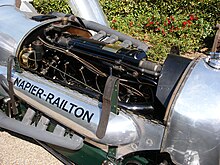When did the first Liberties come off the Nuffield production lines.
Lord Nuffield bought Wolseley Aero engines in 1927 and merged with Nuffield Mechanizations in September 1937.
L.N. seems to have bought his first 25 Liberty engines, along with drawings, from Walter Christie, for $1800
*each in January 1937, and around 50 more later to complete
his order for the A13 MkI Cruisers. These were US WWI built engines, modified with British Lucas ignitions and Solex carbs . These are known as MkI Liberty engines.
It seems that the first MkII all British made engines were first made in early 1938 in the ex-Wolseley plant in Birmingham. Around 350 were made
The later Mk III engines were substantially reworked to reduce the height of the engine by relocating the water and oil pump locations, and introduced the output to allow chain driven cooling fans to be driven. That was nothing but trouble, being changed to shaft driven fans for the Mk IV Nuffield Liberty.
In August 1941, the need for engines exceeded what the Wolseley plant could do, so Morris Motors at Coventry was set to also make Mk III Liberty engines.
That's the time to make RR Meteors, earlier in 1941.
* I've seen note
s that WWI surplus Liberty, in the original factory crates, were surplused out for $100 each in the late '20s when the Army stopped using the type in favor for the Curtiss Conquerors


